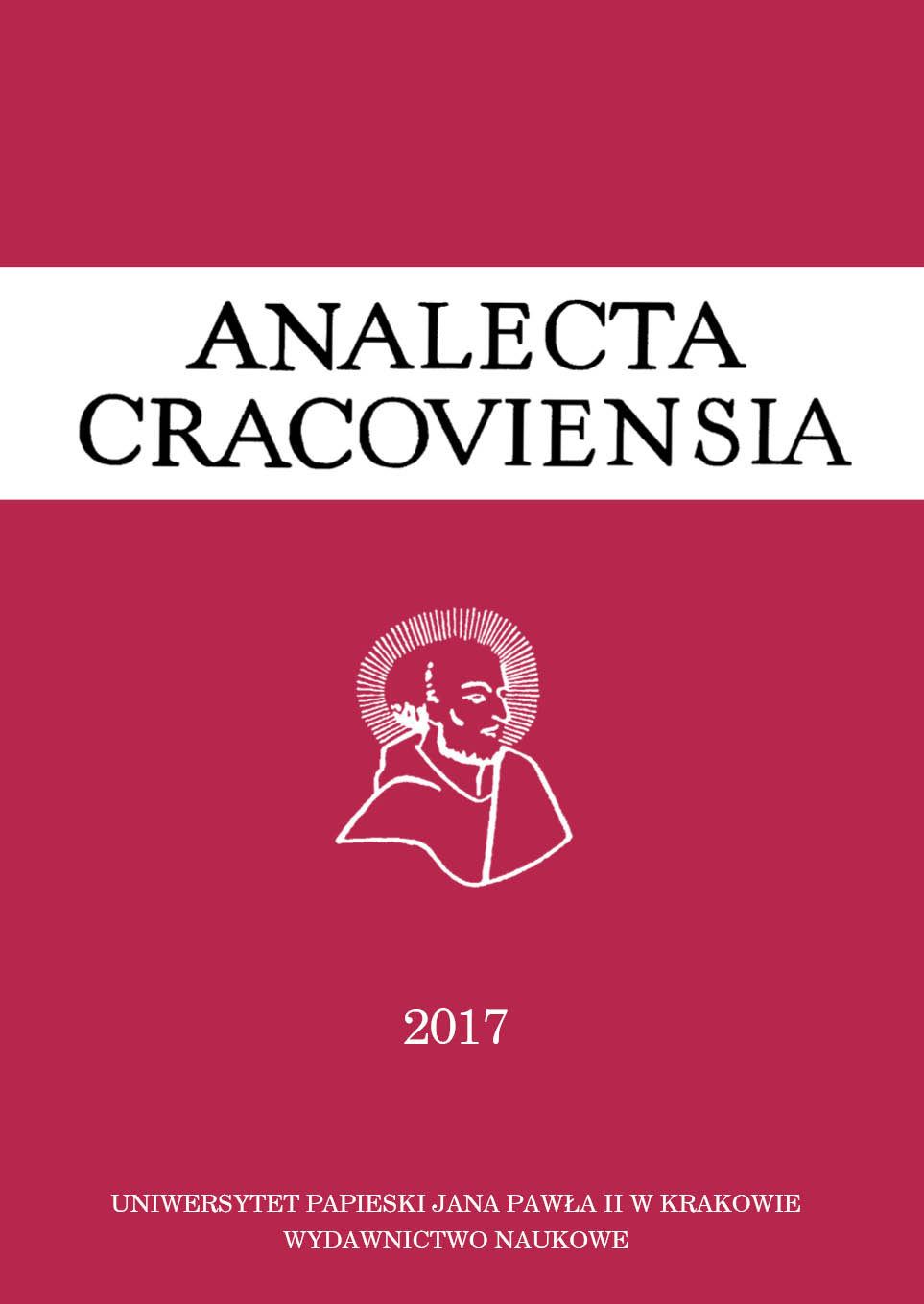Miejsce i znaczenie wyznania wiary w liturgii
DOI:
https://doi.org/10.15633/acr.2406Słowa kluczowe:
liturgia, wyznanie wiary, chrzest, Eucharystia, mistagogia, formacjaAbstrakt
Artykuł zwraca uwagę na motywy i dzieje włączenia wyznania wiary do liturgii Kościoła. Celem pracy jest pokazanie ścisłej zależności zachodzącej między liturgią i życiem chrześcijańskim. Zarówno liturgia, jak i życie chrześcijańskie są oparte na wyznaniu wiary, dlatego też zauważenie tego związku może mieć duże znaczenie dla pogłębienia ścisłego związku życia chrześcijańskiego z liturgią, która nie jest czymś jakby z zewnątrz dodanym do życia chrześcijańskiego, ale określa jego wewnętrzną treść i stanowi w pewnym sensie środowisko naturalne jego autentycznego rozwoju. Wyznanie wiary stanowi pierwszą szkołę wiary i pozostaje podstawowym narzędziem formacyjnym. Ten fakt domaga się więc, aby wyznanie wiary było realnie zgłębianym i trwałym elementem przepowiadania chrześcijańskiego oraz punktem odniesienia dla kształtowania autentycznego ducha chrześcijańskiego.
Bibliografia
Capelle B., Alcuin et l’histoire du symbole de la messe, „Recherches de Théologie Ancienne et Médiévale” 6 (1934), s. 249–260.
Doroszkiewicz W., Cesarz i dogmat. Filiokwistyczne tendencje w Cesarstwie Karola Wielkiego w VIII–IX wieku, Białystok 2014.
Eckmann A., Symbol Apostolski w pismach świętego Augustyna, Lublin 1999.
Głuchowski R., Nawrócenie dworzanina królowej etiopskiej typem ewangelizacji bez granic, Lublin 2010.
Grossi V., Regula veritatis et narratio bettesimale in Sant’Ireneo, „Augustinianum” 12 (1972), s. 437–463.
Hahn A., Bibliotek der Symbole und Glaubensregeln der Alten Kirchen, Breslau 1877.
Harmless W., Augustine and the Catechumenate, Collegeville 2014.
Katechizm Kościoła Katolickiego, Poznań 2002.
Królikowski J., Tajemnica Trójjedynego. Studia z teologii trynitarnej, Kraków 2015.
Lubac H. de, La foi chrétienne. Essai sur la structure du Symbole des apôtres, Paris 2008.
Nautin P., Je crois à l’Ésprit Saint dans la sainte Église pour la resurrection de la chair, Paris 1947.
Obrzędy bierzmowania według Pontyfikału Rzymskiego, Katowice 1975.
Obrzędy chrześcijańskiego wtajemniczenia dorosłych dostosowane do zwyczajów diecezji polskich, Katowice 1988.
Paprocki H., Hipolita Rzymskiego Tradycja Apostolska. Wstęp, przekład, komentarz, „Studia Theologica Varsaviensia” 14 (1976) nr 1, s. 159–160.
Parenti S., Lodi E., La liturgia eucaristica in Oriente, [w:] Scientia liturgica. Manuale di liturgia, t. 3: L’Eucaristia, dir. A. J. Chupungco, Casale Monferrato 1998, s. 74–113.
Paweł VI, Wyznanie Wiary Ludu Bożego – Credo populi Dei, tłum. J. Królikowski, Kraków 2012.
Pierwsi świadkowie. Pisma Ojców Apostolskich, tłum. A. Świderkówna, Kraków 1998.
Puniet P. de, Les trois homélies catéchétiques du sacramentaire gélasien pour la tradition des Évangiles, du Symbole et de l’Oraison dominicale, „Revue d’Histoire Ecclésiastique” 5 (1904), s. 780–782.
Righetti M., Storia liturgica, t. 1: Introduzione generale, Milano 1964.
Schepens P., Pour l’histoire du symbole Quicumque, „Revue d’Histoire Ecclésiastique” 31 (1936), s. 548–569.
Żurek A., Symbol wiary jako przedmiot disciplina arcani w Kościele starożytnym, „Vox Patrum” 37 (2017) t. 67, s. 789–800.
Pobrania
Opublikowane
Numer
Dział
Licencja
Autorzy publikujący w czasopiśmie udzielają jego wydawcy zgody o następującej treści:
- Autor zachowuje autorskie prawa majątkowe do utworu, a jednocześnie udziela wydawcy czasopisma zgody na jego pierwszą publikację w wersji drukowanej i wersji online na licencji Creative Commons Uznanie autorstwa 4.0 Międzynarodowe oraz zgody na wykonywanie opracowań, w tym przekładów.
- Autor ma możliwość udzielania zgody niewyłącznej na opublikowanie utworu w wersji, która ukazała się w czasopiśmie (np. zamieszczenia go w repozytorium instytucjonalnym lub opublikowania w książce), wraz z informacją o jego pierwszej publikacji w czasopiśmie.
- Autor może umieścić swój utwór online (np. w repozytorium instytucjonalnym lub na swojej stronie internetowej) jeszcze przed zgłoszeniem utworu do czasopisma.

